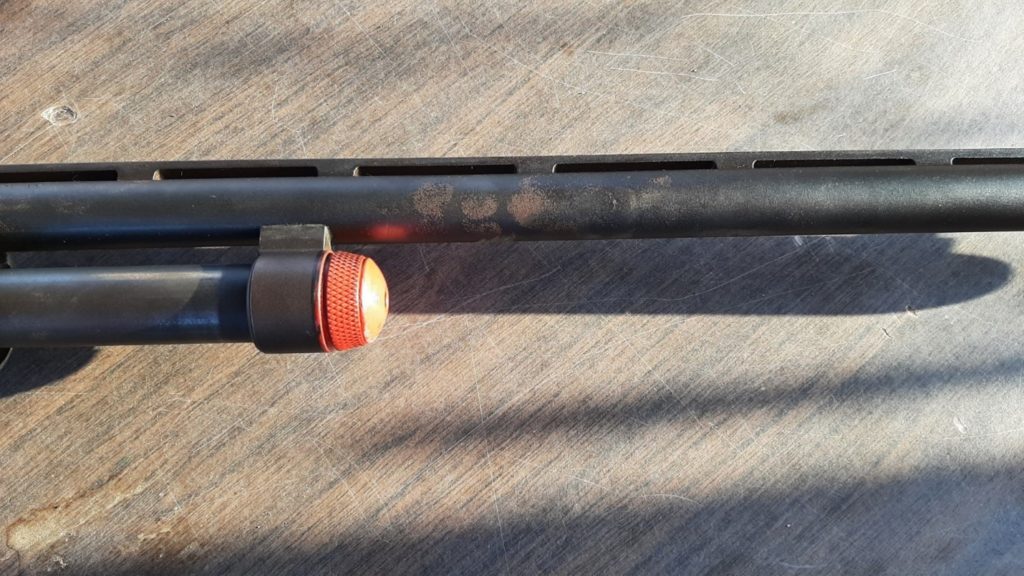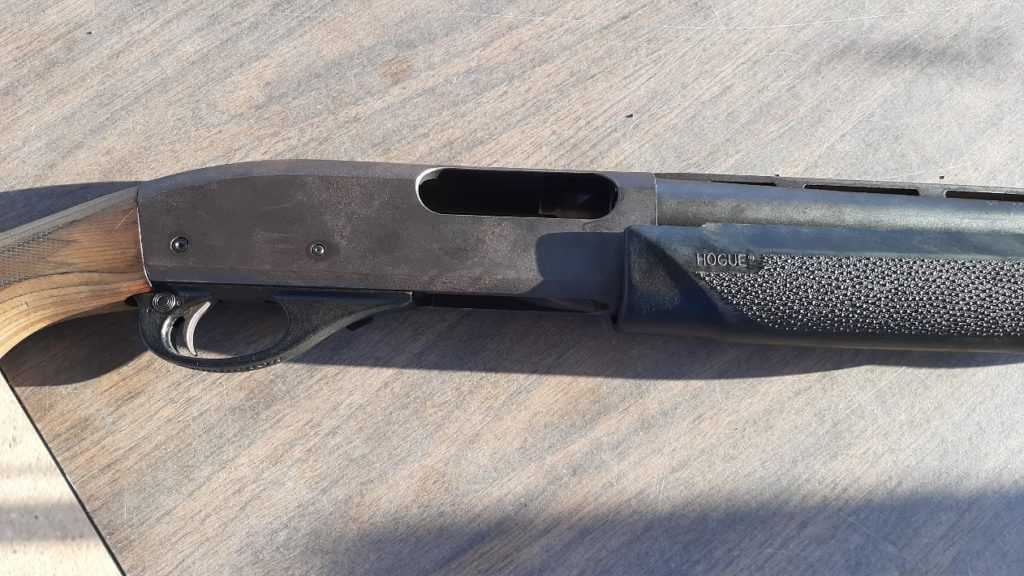By Ken Finley
It was quiet when I finished the five-hour drive into camp. I was responding to a friend’s plea for help. Seemed he had a bunch of students and no instructor for shotgun and pistol. It was quite a deal – I got to spend the week teaching youngsters to shoot shotguns, pistols, and lever action rifles and they were paying me, not the other way around. That sure would make my accountant happy, if I could afford one. So, because I had the appropriate NRA certifications, for one week I got room and board, to spend all day on a shotgun range with a group of fantastic youth and burn through countless cases of 20 ga. shotgun shells. The pigeons were made of clay, so they didn’t squawk about their fate. Of course, it was Texas summer, and you could fry eggs on the barrels of the shotguns in the afternoon, but every morning I woke up to beautiful sunrises on a scenic lake before going to “work”.
My initial investigation revealed a well-cared for range with a securely locked armory. Inside was a large stainless-steel vault on one side and racks of equipment on the other. I opened the safe to find what you see in this picture. A selection of Remington 870 shotguns, six Benelli M2 semi-auto shotguns, a double barrel coach gun, a single shot, break action, and a Remington semi-auto – all in 20 ga.
There was just one problem – the instructor wasn’t the only one gone. The electronic dehumidifier had decided to retire in place and not inform Management. Not one shotgun in that cabinet had escaped the humidity. To see such fine firearms in the condition I found was the crime of the decade. Fifteen G’s worth of hardware victim to the elements.

I’ve heard of small-time crime but this was on the molecular level. In the summer you expect to see sun-browned bodies, but not when they were supposed to be blued steel. I looked at the rust on this Benelli and knew I wouldn’t have to look far to find the culprits. It is hot, the shooters were perspiring, and the barrels got hot from extended shooting strings during qualification rounds. The Benelli shotgun’s matte blue barrel finish apparently was not as resistant to corrosion as I thought it should be, and this Crio barrel didn’t come out of a Cracker Jack’s box.

The FBI said you should always carry something that started with a 4 and they were right. I pulled out my trusty 4-ought steel wool, lightly brushed the damaged area to remove all the brown and applied a little Birchwood Casey’s SuperBlue as a retouch to the finish. After rinse and drying, I applied a little oil to set the blue and provide further protection. My shotgun classes got a little extra regarding care and maintenance of quality firearms.
One 870 intrigued me. The boys in blue could take fingerprints off the barrel. Here is proof positive that one should never touch the metal parts of a firearm. The hot, humid weather of the camp accelerated formation of rust. Again, regular cleaning and maintenance will keep this from happening. We all, at some point, will touch the metal, even though we know better.

Watching over the course of the week, I spied more than one culprit. Everyone reaching into the vault to retrieve or replace a shotgun was grasping said shotgun by the barrel rather than the stocks or foregrips, the furniture. The vault was so low it was just easier to grasp the firearms by the barrel. Raising the vault about six inches off the floor would have made it easier for shooters to grasp the furniture to move firearms around. People aren’t all bad, they’re just drawn to be bad – it’s nature versus nurture. Any time we can change the environment to make it easier to do what we are supposed to, that makes sense.

One doll of a pump shotgun had been really marked up by old man rust. Its once pretty face had been drained of color and now looked older than her years. She was no touch for a quickie. This job would take some time. I steel wooled the receiver and made sure all the rust was gone.
Even though I was using cold blue, sometimes, heating the metal aids the process. I set the receiver in the sun until it almost burned my fingers. I rubbed the SuperBlue in with a cotton swab and let it set for a while. I rinsed it off, buffed with the steel wool, and repeated the process. After about four cycles, the shotgun started looking like the proud thing it was. When I put her back in the vault, she stood proud with her peers.
I did learn a couple of interesting things about using a vault, or safe. Electronic dehumidifiers are nice, but going to Walmart and buying a three pack of DampRid to hang one in the safe as passive protection is a good backup. Also, position the safe so that when you use it, it is easy to do it right. Finally, if you look closely in the opening picture you will see a .22 rifle sitting in the midst of the shotguns. It is terribly rusted. It wasn’t there when I opened the safe. I’d brought it with me to work on in my “spare” time. It is a classic example of what happens when you don’t regularly maintain your investment in the shooting sports. What it will take to restore that once beautiful Marlin 39A to working condition is the topic of another article, and a warning to what could have happened in this vault. Rust is out there – lurking in the shadows – waiting to suck the value out of the products you spend your hard-earned cash on. Stay on your toes and don’t let them rust in peace.